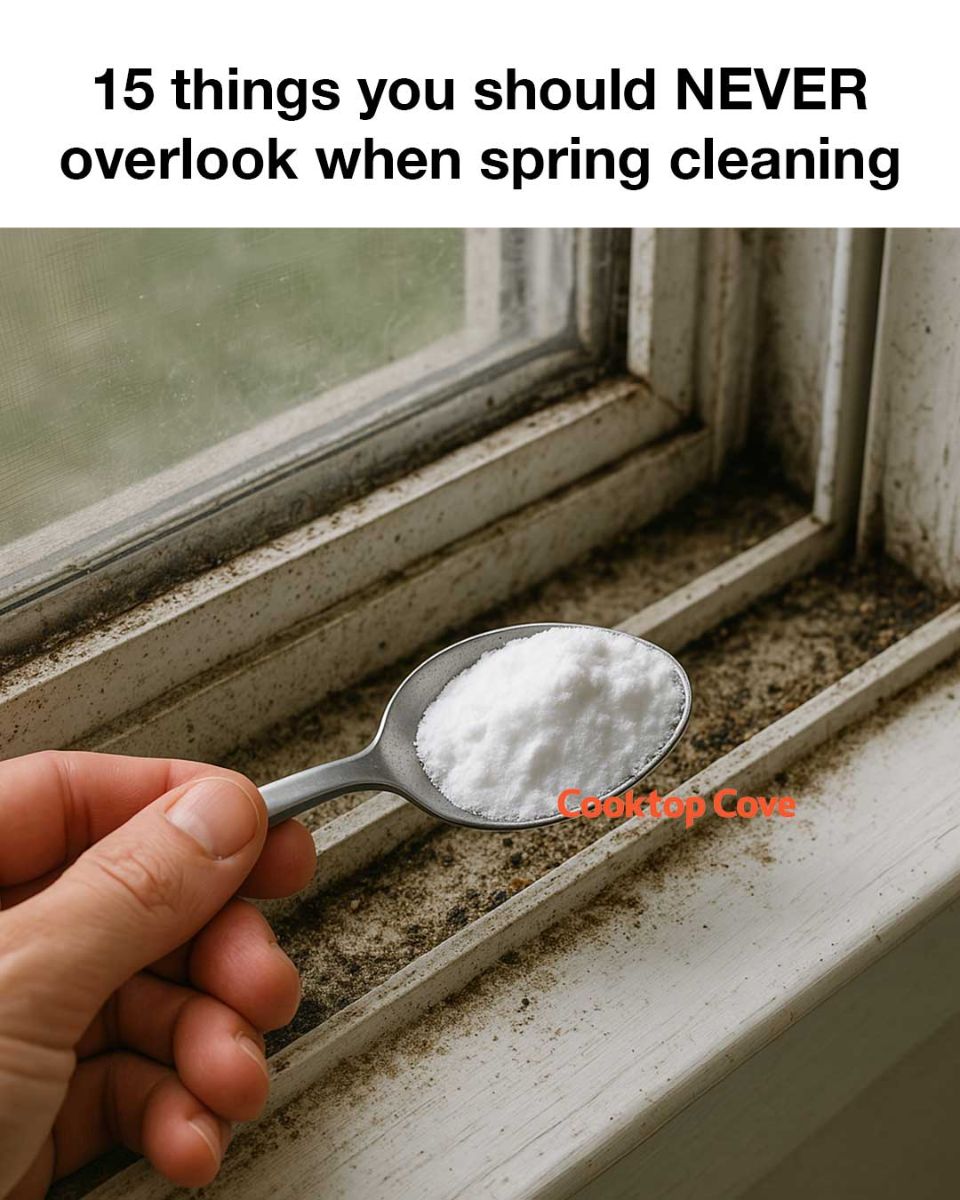ADVERTISEMENT

15 things you should never overlook when spring cleaning
1. Ceiling Fans: Dust and Balance
Ceiling fans are often neglected during regular cleaning routines, but they can accumulate a significant amount of dust and dirt. To clean them, use a microfiber cloth or a specialized fan duster to remove dust from the blades. Additionally, check the balance of the fan to ensure it operates smoothly and quietly. An unbalanced fan can cause wear and tear over time, leading to costly repairs.
2. Baseboards: Grime and Dust Removal
Baseboards are another area that often goes unnoticed. Over time, they collect dust, pet hair, and grime. Use a damp cloth or a vacuum with a brush attachment to clean them thoroughly. For stubborn stains, a mixture of warm water and mild detergent can be effective. Clean baseboards can make a significant difference in the overall appearance of a room.
3. Window Tracks: Hidden Dirt and Debris
Window tracks can harbor dirt, dead insects, and other debris, which can impede the smooth operation of windows. Use a vacuum with a crevice tool to remove loose dirt, then use a toothbrush or a small brush with soapy water to scrub away the remaining grime. Rinse with clean water and dry thoroughly to prevent mold growth.
4. Light Fixtures: Dust and Bug Removal
Light fixtures, including chandeliers and ceiling lights, can collect dust and even dead bugs. Turn off the power before cleaning, and use a microfiber cloth or a duster to remove dust. For glass fixtures, a solution of water and vinegar can help restore their shine. Clean light fixtures not only look better but also provide brighter illumination.
5. Air Vents: Improving Air Quality
Air vents circulate air throughout your home, and if they are dirty, they can spread dust and allergens. Remove vent covers and wash them with warm soapy water. Vacuum inside the ducts to remove dust buildup. Clean air vents contribute to better air quality and more efficient heating and cooling.
6. Behind Appliances: Forgotten Spaces
The spaces behind appliances like refrigerators, ovens, and washing machines can become a haven for dust, grease, and even pests. Pull out appliances carefully and vacuum or sweep the area. Use a degreaser for any sticky residue. Regular cleaning of these areas can prevent unpleasant odors and improve appliance efficiency.
7. Under Furniture: Dust Bunnies and Lost Items
The area under furniture is often neglected, leading to the accumulation of dust bunnies and lost items. Move furniture carefully and vacuum or sweep underneath. This not only helps in maintaining cleanliness but also in recovering lost items like toys, socks, or even remote controls.
8. Curtains and Blinds: Dust and Allergen Control
Curtains and blinds can trap dust and allergens, affecting indoor air quality. For curtains, check the care label and either machine wash or dry clean them. For blinds, use a microfiber cloth or a specialized blind cleaner to remove dust. Regular cleaning can help reduce allergens and keep your window treatments looking fresh.
9. Mattress: Deep Clean and Rotate
Mattresses can harbor dust mites, dead skin cells, and allergens. Vacuum your mattress thoroughly and use a mattress cleaner or baking soda to remove odors. Rotating your mattress can also help prevent uneven wear and extend its lifespan. A clean mattress contributes to better sleep quality.
10. Door Frames and Handles: High-Touch Areas
Door frames and handles are high-touch areas that can harbor germs and bacteria. Use a disinfectant wipe or a cloth with a mild cleaning solution to clean these surfaces. Regular cleaning can help prevent the spread of germs, especially during flu season.
11. Grout Lines: Deep Cleaning for Freshness
Grout lines in bathrooms and kitchens can become stained and moldy over time. Use a grout cleaner or a mixture of baking soda and vinegar to scrub the grout lines. A clean grout not only looks better but also prevents mold growth and extends the life of your tiles.
12. Trash Cans: Odor and Germ Control
Trash cans can become breeding grounds for germs and unpleasant odors. Empty them regularly and wash them with a disinfectant or a mixture of vinegar and water. Ensure they are completely dry before replacing the liner. Clean trash cans contribute to a fresher-smelling home.
13. Bookshelves: Dust and Organize
Bookshelves can accumulate dust and become cluttered over time. Remove all items and dust the shelves thoroughly. Take this opportunity to declutter and organize books and decorative items. A tidy bookshelf can enhance the aesthetic appeal of a room and make it easier to find what you need.
14. Outdoor Spaces: Patio and Furniture Cleaning
Outdoor spaces like patios and decks can collect dirt, leaves, and debris. Sweep or power wash these areas and clean outdoor furniture with a suitable cleaner. Regular maintenance of outdoor spaces can extend their lifespan and make them more inviting for relaxation and entertainment.
15. Electronics: Dust and Sanitization
Electronics such as TVs, computers, and remote controls can collect dust and germs. Use a microfiber cloth to gently dust screens and surfaces. For germ-prone items like remote controls, use a disinfectant wipe. Clean electronics not only function better but also contribute to a healthier home environment.
Advertisement
Conclusion: Maintaining a Clean and Healthy Home
Spring cleaning is more than just a seasonal chore; it’s an opportunity to refresh your home and improve your quality of life. By addressing often-overlooked areas, you can create a cleaner, healthier, and more organized living space. Regular maintenance and mindful cleaning practices can help sustain these benefits throughout the year, ensuring your home remains a haven of comfort and well-being.
ADVERTISEMENT